REFINERY DEVELOPMENT |
||
| AUGUST 12, 1924 | ||
| THE BIRTH OF LAGO | ||
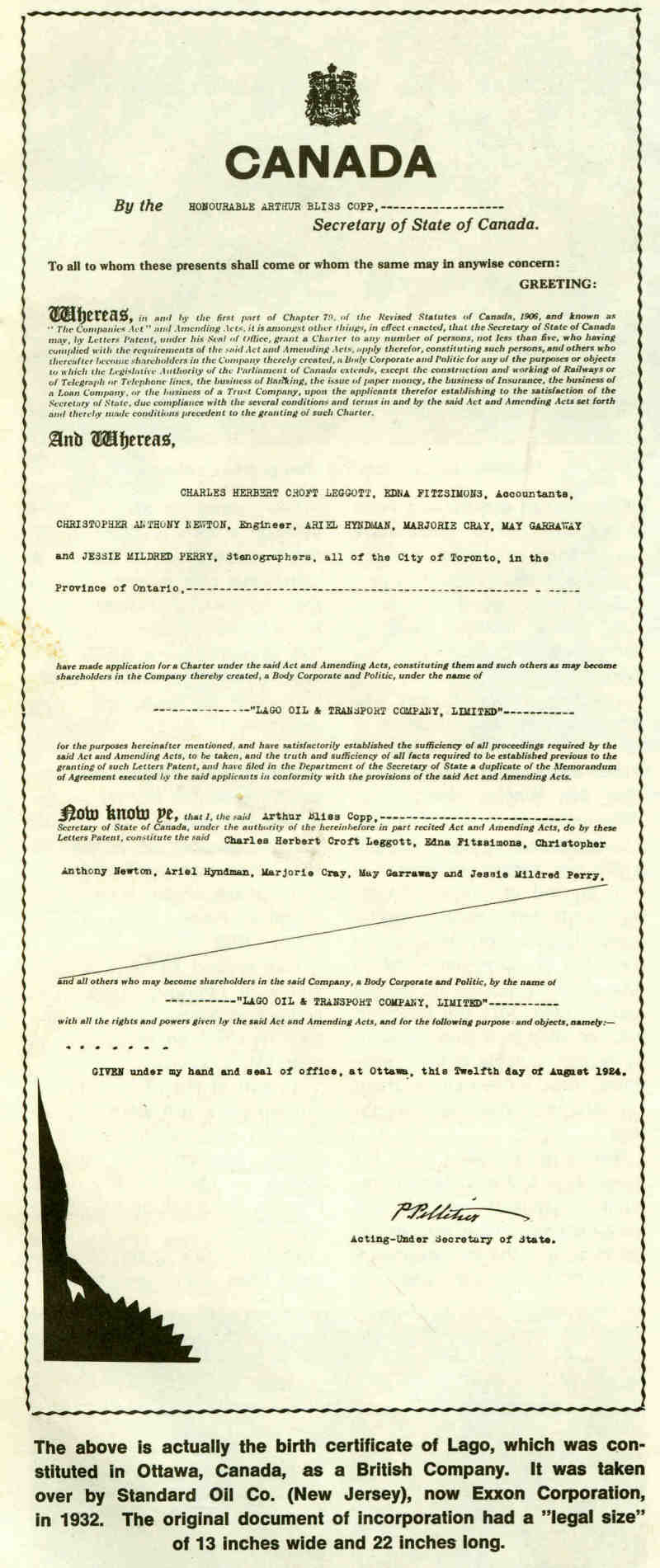 |
||
|
1927 |
||
|
This is a 1927 photo of the Pan American Petroleum transshipment facility in San Nicholas, Aruba N.W.I. San Nicholas harbor is to the right, the photo is taken looking East. Only one storage tank can be seen in this photo. |
||
 |
||
| Another early photograph of the area that became Lago Refinery. This photo was taken from "this is LAGO". | ||
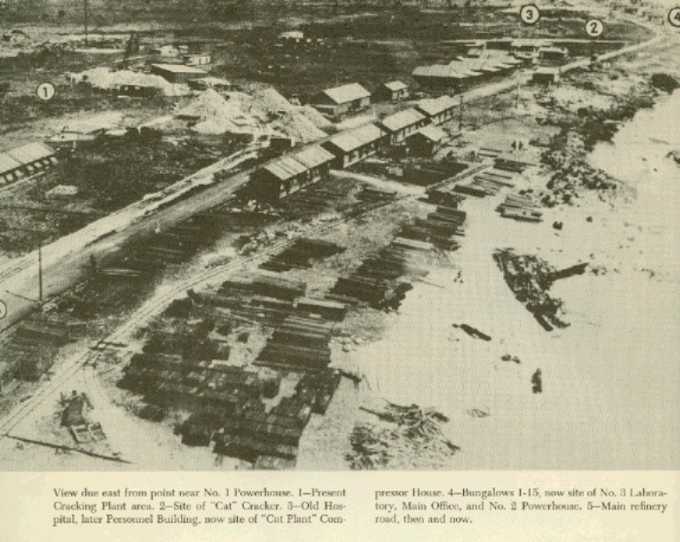 |
||
 |
||
 |
||
| This next two photographs are very old. This was the beginning of the Pan American Petroleum transshipment facility in San Nicholas, Aruba N.W.I.. In the first photo the T-Dock can clearly be see. The third photo down, of the Pan American Wharf if the same T-Dock. The photographer was standing on the beach in front of the two story white house, built by Djan Eman in around 1870. This is where his son Shon Wawa Eman received the first Lago-people and later some of the employees lived in the house. Bill Ewart talks about the White House in his article in the Aruba Esso News. CLICK HERE TO GO TO THAT ARTICLE. In 1942 the white house was broken down. In the photograph taken in 1932 this same T-Dock is still in use. Both the next two photographs were supplied by Richard Beaujon. | ||
 |
||
 |
||
| Richard Beaujon also supplied this great photograph of the white house. At the time this photograph was taken it was probably being used by Lago, I base this statement on the flags, probably used for signaling the ships coming into and leaving the harbor. Also note the railroad track, which was left over from when the harbor was used to ship phosphate and the phosphate was hauled on the small railroad from the mine on "hospital hill" to the port. This railroad was utilized by Lago to haul material during construction of the refinery and to move sulfur from the sulfur recovery unit to the port and material, such as commissary supplies, from the port to warehouses and cold storage. In 1956 the railroad was no longer needed. There is an article below taken from an Aruba Esso New, about the end of the railroad. | ||
| Dr. Lee A. Dew, who wrote the article; The Day Hitler Lost the War also wrote a book; Railroad of Aruba and Curaçao, in Chapter 2 of this book he give a history of the Lago Railroad. You can read this chapter by clicking on the book title.. | ||
|
|
||
| The following photograph is taken from the October 20, 1962 Aruba Esso News. It is a photo of what the San Nicholas Harbor and surrounding shore area looked like in 1928. | ||
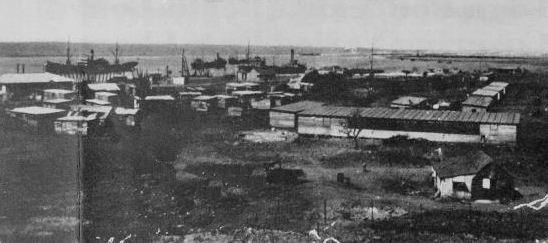 |
||
| This next photograph is a post card. It came from the Aruba Esso News. | ||
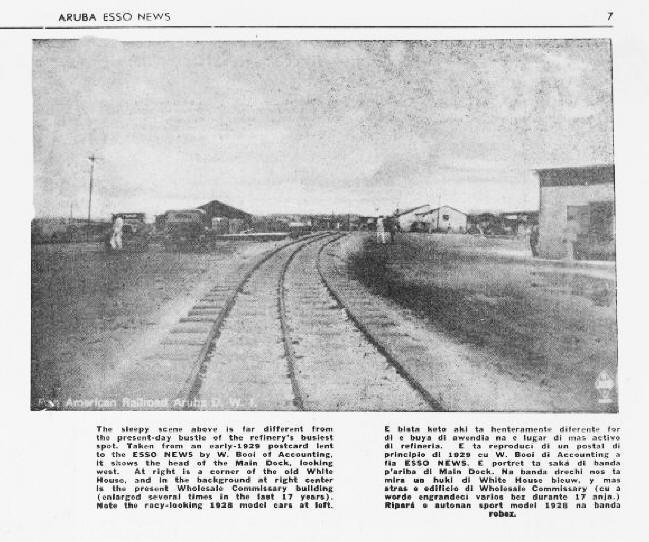 |
||
| In 1956 the Aruba Esso News reported that the railroad that served the Lago Refinery was removed. | ||
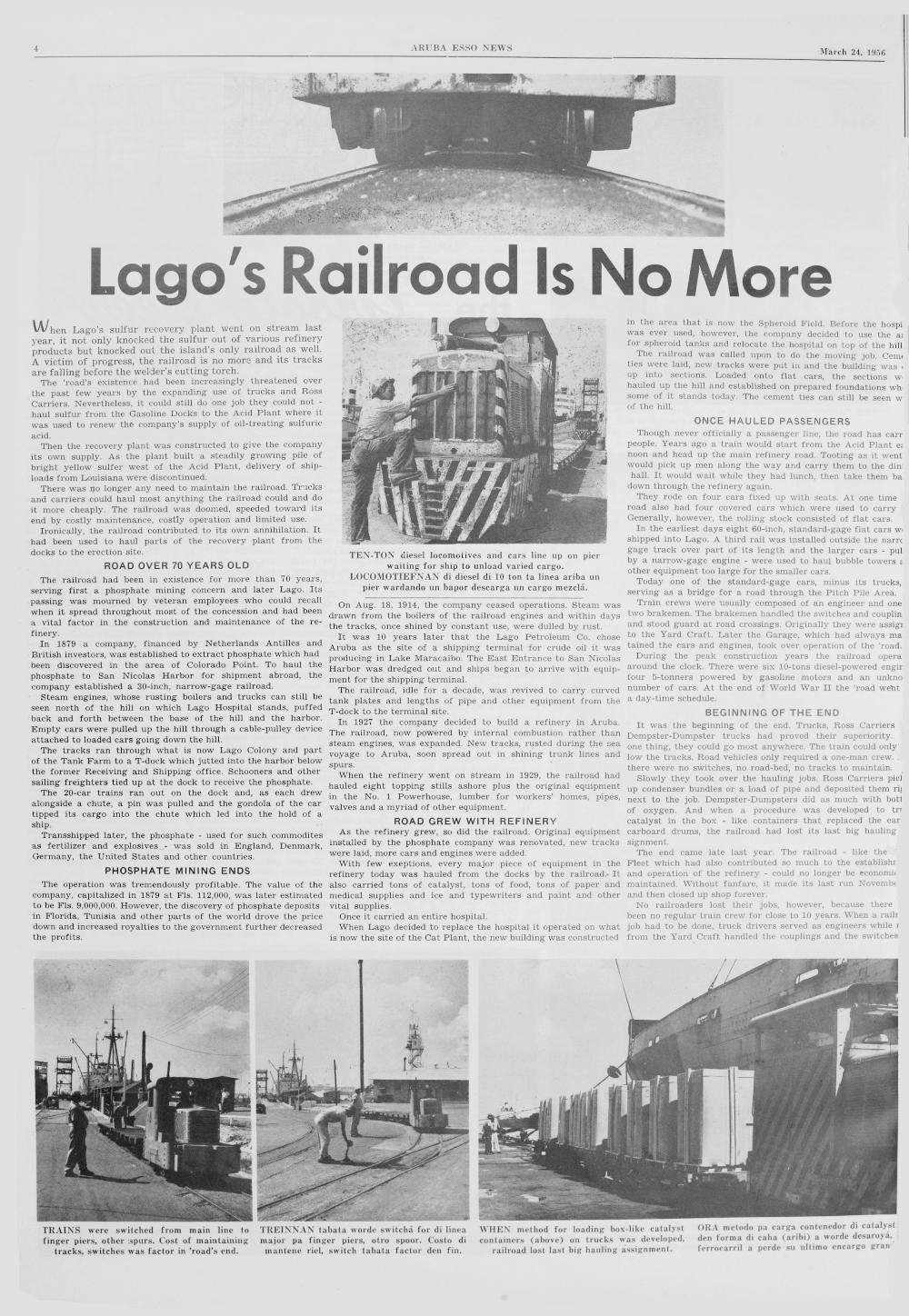 |
||
 |
||
| Pan American Petroleum's Transshipment Wharf Facility in San Nicholas, Aruba N.W.I. Note the Lake Tankers, three of them, with one ocean going tanker behind the three Lake Tankers. Photo supplied by Stan Norcom. | ||
 |
||
| This photo from Richard Beaujon and dated 1928 is probably the first Lago Tug Boat. Written below the photograph is, I believe, San Nicholas, I do not know if this was the name of the Tug or the location where the photograph was taken. The date is 1928. | ||
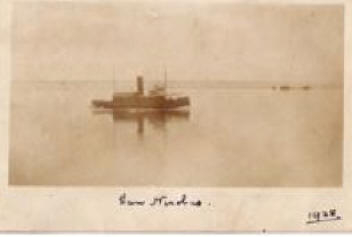 |
||
| 1932 | ||
| By 1932 the Lago Oil & Transport Company, Ltd. refinery facility at San Nicholas, Aruba N.W.I. had grown to what is seen in the photo below.. Refinery center, tank farm to left, harbor to right and foreground with Lago Colony, the housing for foreign staff employees, in background, right. This photo is looking east. | ||
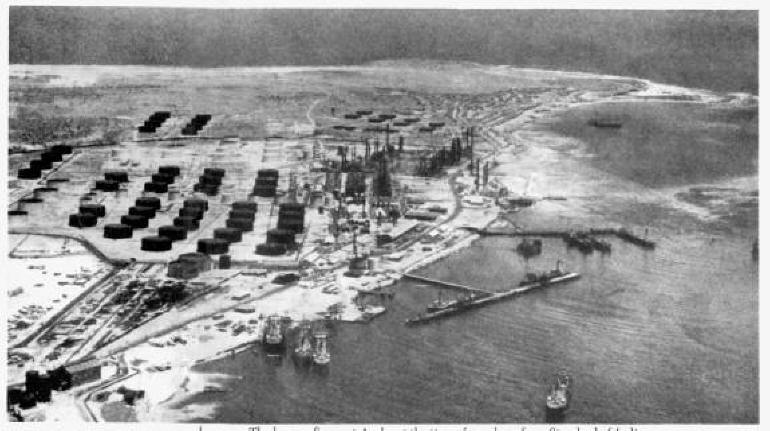 |
||
| Another view of the Lago Refinery looking south, this photo was submitted by Stan Norcom. | ||
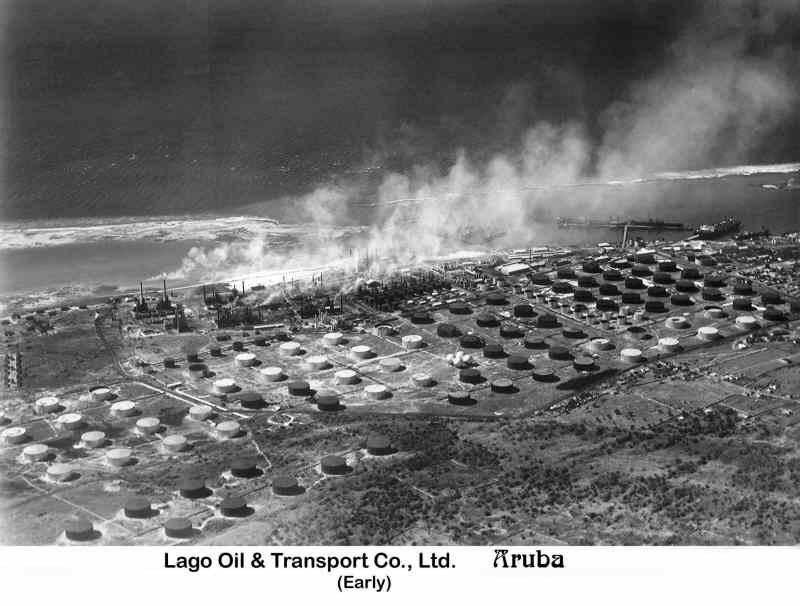 |
||
| This is a photograph of the main wharf with the Marine Department Office on the right, the photo was taken in December of 1934. | ||
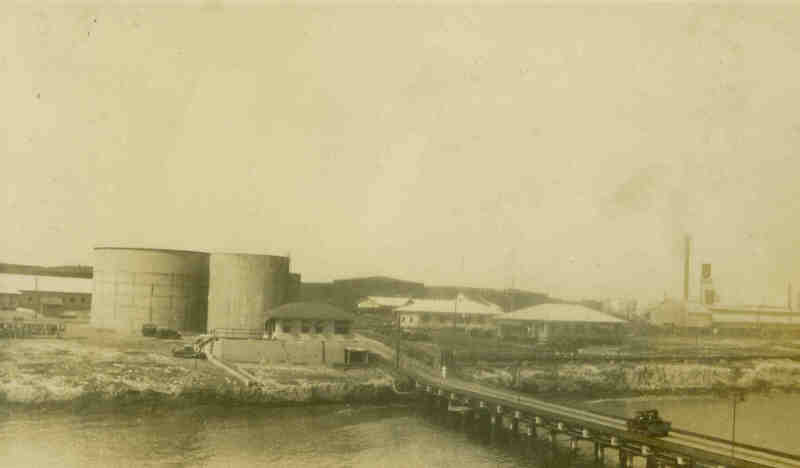 |
||
|
This is a photo taken inside the refinery of tanks, there were lots of tank, and lots of pipes, there were an awful lot of pipes in the refinery. |
||
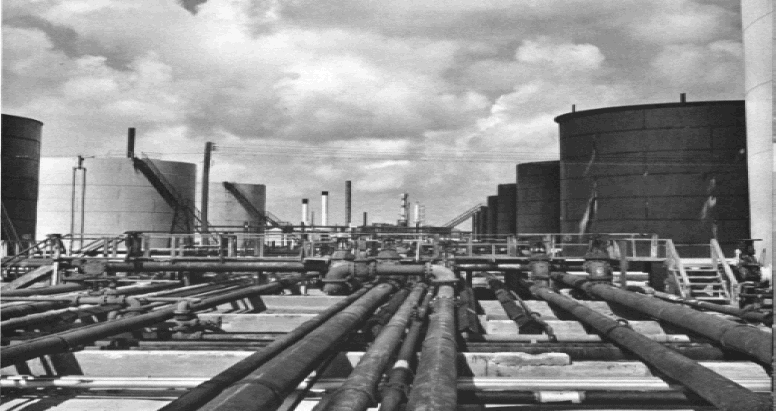 |
||
| THE FOLLOWING PHOTOS OF THE REFINERY ARE FROM THE DON BLAIR COLLECTION WHICH PROBABLY DATE AROUND 1938/1940. IN THE FIRST PHOTO THE DRAFTING ROOM, AND YOU THOUGHT WORKING IN A CUBICAL WAS ROUGH. | ||
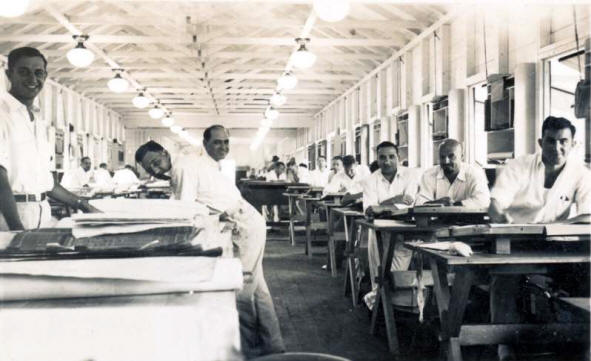 |
||
| ABOVE, ENGINEERING AND DRAFTING | ||
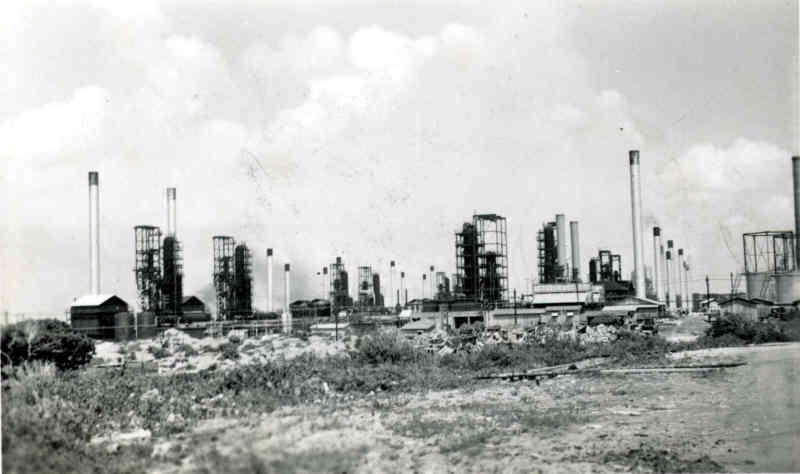 |
||
| THE REFINERY FROM LAND | ||
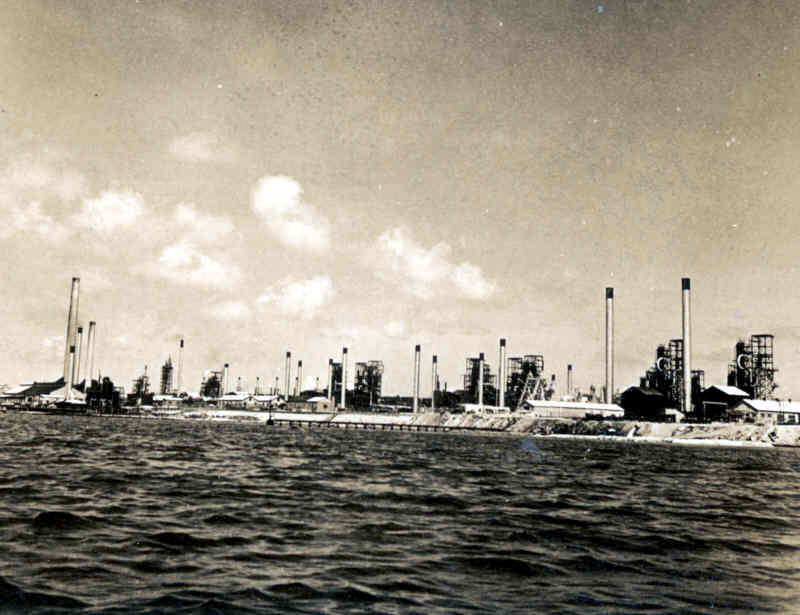 |
||
| THE REFINERY FROM THE SEA | ||
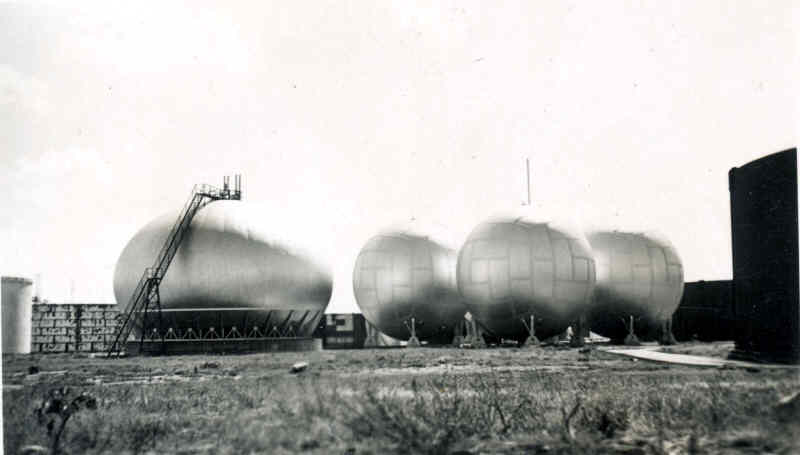 |
||
| TANK FARM AND SPHEROID TANKS FOR HOLDING MATERIAL UNDER PRESSURE. | ||
|
||
| RETURN TO THE LAGO REFINERY DIRECTORY |